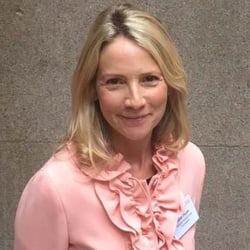What’s next for digital twins in the public sector?
Imagine a virtual model of an object, system or process connected to its real-world counterpart by a flow of data, meaning it mirrors it in all aspects. This is the role of digital twins, where complex data becomes visible, and problems are easier to uncover.
Digital twins hold the answers to many of government’s big questions around climate change, sustainability and resilience. But despite some promising early use cases, digital twinning has remained as a largely theoretical concept for most of the public sector. We asked a group of digital twin experts what steps are being taken to bring it into the mainstream once and for all?
Data integration and access
Underpinning the success of digital twins is the thorny issue of data integration and access; they all require the ability for different sectors to be able to contribute and share information and to gain insights. The challenge, therefore, is working out how data can be brought together from different sources - and how that information be made available to the right people at the right time, while ensuring that the user can understand the quality of the information they are receiving.
The National Digital Twin Programme (NDTP), a programme being run by the Department for Business and Trade (DBT), was set up to help find a solution to these challenges and has been working toward the creation of a national digital twin – an ecosystem of connected digital twins.
Department for Business and Trade (DBT), was set up to help find a solution to these challenges and has been working toward the creation of a national digital twin – an ecosystem of connected digital twins.
NDTP Deputy Head Alex Atudosie says they are entering an “exciting new phase” of this journey with the development of an integration architecture, which will open up the ability to share information across organisation and sectoral boundaries in a way that is trusted, secure and resilient.
It’s anticipated that this will “finally move the needle on digital twins” in the public sector, Atudosie says, enabling people to develop digital twins, and crucially, to connect them up across organisations. “There are a lot of initiatives out there churning out yet another report or another conversation on digital twins, but we're actually developing a product. The integration architecture is the most mature piece of digital infrastructure which currently allows different organisations across the public sector to share data, moving digital twins from a place of theoretical discussion to a point of reality.”
It is a huge piece of the digital twin puzzle, developed in collaboration with organisations across central government in order to align efforts in terms of what it should do and how it looks, adds Alexandra Luck, Head of NDTP.
 Notably, the integration architecture will help lower the barrier to digital twin adoption. As Luck explains: “It’s been developed to be open source so anybody will be able to download and use it, even those without high levels of technical capability or resources; local councils delivering within tight budgets and government agencies under pressure to deliver.”
Notably, the integration architecture will help lower the barrier to digital twin adoption. As Luck explains: “It’s been developed to be open source so anybody will be able to download and use it, even those without high levels of technical capability or resources; local councils delivering within tight budgets and government agencies under pressure to deliver.”
The first release of the integration architecture will be available early in the new financial year.
Collaboration and communication
Enabling people to share data more easily is as much a cultural challenge as it is a technical one; it demands a level of trust, transparency and willingness among organisations.
The Climate Resilience Demonstrator (CReDo) is a digital twin project that used to be run by Centre for Digital Built Britain, a partnership between DBT and the University of Cambridge, before being transitioned to the Connected Places Catapult. The project highlights how connected data can improve climate adaptation and resilience across a system of systems.
An early pilot enabled the sharing of sensitive data across three organisations – UK Power Networks, BT and Anglian Water – to create a digital twin of the infrastructure system for energy, water and telecoms that would allow them to manage their response to extreme weather in a more coordinated way. 
Sarah Hayes, who is the Strategic Engagement Lead for CReDo, says collaboration and communication were fundamental to the success of the pilot, “building trust among stakeholders and creating more of a willingness to share data across organisations through a shared business case.”
She says they used a range of storytelling approaches to communicate the concept as clearly as possible and to build trusts across the partners. “It always helps to have a visualisation so we used synthetic data to replicate how the digital twin could be used.”
The complexity of digital twins, exacerbated by the fact there is no universally agreed upon definition of the concept, has previously made it difficult to build engagement. Because of this, “a large part of the challenge is building a community of the willing who are interested in the idea and who are able to invest in its development,” Hayes notes.
Progress is being made on this, with digital twins being talked about more openly by Ministers over the last twelve months – particularly in the context of decarbonisation, sustainability and economic resilience. Meanwhile, the Digital Twin Hub – an online community run by Connected Places Catapult for anyone interested in the development of digital twins – is addressing the skills gap as a barrier to digital twin adoption by providing capability training for senior leaders.
Hayes says more creative lengths have also been taken to raise public awareness of the power of digital twins. In 2021, a short dramatic film was made about CReDO with a Bafta winning director. A shorter documentary was also made with Julia King, Baroness Brown of Cambridge and Chair of the Adaptation Committee, to highlight the value of sharing data in the context of climate resilience. “It’s important that there is more transparency and visibility around digital twins, there’s no point doing it all behind closed doors,” Hayes says.
Luck believes there is also a need to develop people’s understanding of how digital twins can drive value versus some of the more simple ways of analysing that same information. “This is the path that we’re going through right now. The National Digital Twin Programme is trying to get people away from the idea that they want a digital twin without having first assessed what the problem is, and what the right combinations of technologies and processes will be to help solve that.”
The development of new technologies and sensors that handle data such as AI continue to bring renewed attention and relevance to the digital twin concept, Atudosie says. But there is still a need to continue “pushing digital twins out of special interest groups” and into the mainstream, he adds.
Future trends
As people’s understanding of digital twins grows and the data infrastructure that underpins them becomes more sophisticated, what’s next for this tool?
According to Hayes, digital twins are evolving to become based around the idea of a distributed architecture, meaning that data will reside with the data owners rather than in central databases. There are clear benefits to this approach: data can be stored more securely, the cost of sharing is minimised and the quality of data is more easily maintained – making it more scalable.
“I would say it's very much a future trend because no one's cracked that yet,” Hayes says. “There’s a lot of the work that's going on across different initiatives and we need to make sure that this work is done collaboratively across sectors, and also visibly and transparently for people to be able to understand and adopt these things.”
The NDTP continues to collaborate with a number of government departments with digital twin initiatives, as well as executive agencies and other organisations providing public service, most recently signing an MoU with National Grid ESO to collaborate in developing an energy system data sharing infrastructure.






